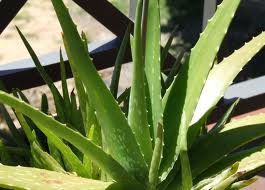| PlantID | 0002 |
| Botanical Name | Aloe vera |
| Common Name | Ghrit Kumari |
| Classification | | Kingdom: | Plantae | | Subkingdom: | Tracheobionta | | Division: | Magnoliophyta | | Class: | Liliopsida | | Subclass: | Lilidae | | Order: | Liliales | | Family: | Aloeaceae | | Genus: | Aloe | | Species: | vera |
|
| Part used | Fresh or dehydrated juice from leaves |
| Medicinal Properties | Cathartic, emollient, purgative, stimulant, vulnerary |
| Medicinal Use | Weak digestion, general weakness, anaemia, bloating, stomach ulcers and gum disease. |
| Chemistry | Aloe emodin, amino acids, anthraquinons, arabinose, antibiotic principles, barbaloin, carbohydrate, rehin, lignin, proteolytic enzymes, saponins, xylose, steroids. |
| Cultivation | Cultivated in the dry areas of rajasthan |
| Regional Habitat | Aravali hills and plain of Rajasthan |
| Description | The aloe is a perennial plant; the strong, fibrous root produces a rosette of fleshy basal leaves as in the agave but considerably smaller. Leaves: narrow-lanceolate,1-2 feet long and whitish-green on both sides, and they bear spiny teeth on the margins. Flower: The yellow to purplish, drooping flowers, which are evident most of the year, grow in a long raceme at the top of a flower stalk up to 4 1/2 feet high. Fruit: triangular capsule containing numerous seeds. |
| Image |  |


